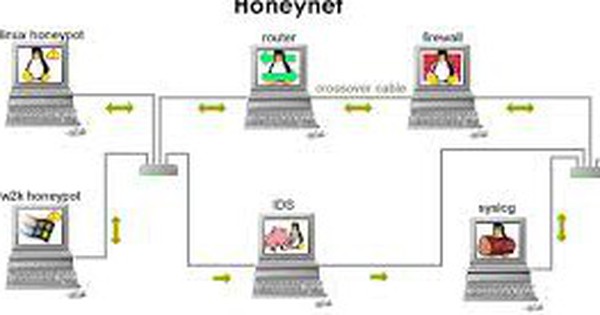What is GitIgnore? How to Create and Use GitIgnore
Gitignore allows users to clearly identify unnecessary files and folders in version tracking with Git. Configuring Gitignore effectively helps remove personal configuration files or sensitive data from the repository, thereby improving the security and performance of the project. So what is Gitignore and how does it work? Let's find out with TipsMake through the article below.
What is GitIgnore?
GitIgnore is a file in your Git project called .gitignore. Its main function is to list files or directories that you don't want Git to track or store. When you add files to GitIgnore, Git will ignore them during commits and pushes to the repository, helping to keep your repository clean and avoid storing unnecessary files.

The GitIgnore file is typically located in the root directory of your project, but you can create multiple GitIgnore files for subdirectories if needed. Each pattern in the GitIgnore file can define different rules for determining which files should be ignored. These patterns can be specific file names, file types (like *.log), or directories (like /temp/).
How GitIgnore Works
GitIgnore works based on simple syntax and consistent rules. When a file is added to a GitIgnore file, Git tracks the contents of that file and decides whether or not to include it in the commit history.
When you add a file to Git, Git checks the GitIgnore file before committing the change. If the file is on the GitIgnore list, Git will never track changes to that file. You can work with files without worrying about them being included in the repository.
Benefits of using GitIgnore
Using GitIgnore brings many benefits to programmers and development teams. Here are some specific benefits of using GitIgnore.
Minimize clutter in your warehouse
Without GitIgnore, files created during development can all be included in Git, resulting in a repository that becomes unmanageable and filled with unnecessary files.
Protect sensitive information
GitIgnore helps protect sensitive information by preventing files containing private information from being included in the repository.
Speed up the development process
When you have a properly configured GitIgnore file, you can focus on what matters most without having to worry about temporary or unnecessary files slowing down your development.
Support more efficient team workflows
In a team, using GitIgnore ensures that all members are on the same page when it comes to managing files and folders. This creates a professional and synchronized working environment among team members.
How to Create and Use GitIgnore
Create GitIgnore file
Create a file called .gitignore in your project's root directory. You can use the touch .gitignore command in the terminal to create this file.
Open the .gitignore file and add rules to specify which files or directories you want Git to ignore.
How to write rules in GitIgnore
Once you have a GitIgnore file, the next step is to write rules to define which files should be ignored. Here are some basic rules:

How to write rules in GitIgnore
- Ignore entire files or directories: Just write the name of the file or directory you want to ignore. For example: node_modules/, dist/, .env.
- Ignore all files with extensions: Use the asterisk * to represent any character. For example: *.log, *.tmp.
- Ignore all files in subdirectories: Use the forward slash / to explicitly specify a directory or file in a subdirectory. For example: /temp/*.log.
- Exclude specific files: Use the ! exclamation mark to exclude a specific file from the ignore rule. For example: *.log and !important.log
Use available GitIgnore templates
If you are new to writing GitIgnore rules, you can check out the available GitIgnore templates. GitHub provides a repository of GitIgnore files for many different types of projects, from web apps to mobile apps.
How to check GitIgnore validity
Once you have created and configured your GitIgnore file you need to check that these rules are working as expected. The simplest way to do this is to use the 'git check-ignore' command.
Use the 'git check-ignore' command
The git check-ignore command allows you to check if a file is ignored by GitIgnore. Here's how to use it:
- git check-ignore -v myfile.txt
- The -v option is used to display more detailed information about the applied skip rule.
Notes when using GitIgnore
While GitIgnore is a powerful tool, there are still a few things you should keep in mind when using it, including:
Don't ignore important files
One of the common mistakes when using GitIgnore is ignoring important files. This can lead to code that doesn't work properly or even doesn't compile. So when writing GitIgnore rules you need to make sure that you only ignore unnecessary files without affecting the development of the project.
Update GitIgnore as needed
In case you have any doubts about whether a particular file is being ignored by GitIgnore, you can use the git check-ignore command to check. This check helps you make sure that GitIgnore is working as expected and not ignoring important files that you want to track.
Conclude
Effective source code management requires eliminating unnecessary files, and .gitignore is an essential tool for doing this. It helps protect private information, streamline the repository, and improve workflow. Hopefully, the knowledge provided by TipsMake will help you master this tool and successfully apply it to your software development projects.
You should read it
- PS2 emulator for Android, runs God of War II smoothly at 60 fps
- Things to know when using a digital camera
- How to fix black screen error on iPhone
- The iPhone is over 5 years old and many people are still willing to use it for a while longer.
- This is the interface of Lite OS, Microsoft's new operating system, competitor with Chrome OS
- It turns out we are all misunderstanding the purpose of the keyboard leg
- How to create 3D characters with ZEPETO
- How to rotate the video in reverse, tilt with Windows Movie Maker
May be interested
- What is Honeynet? Benefits of Honeynet against cyber attacks
 a honeynet is a network of multiple honeypots designed to simulate a real network, complete with multiple systems, databases, servers, and other digital assets.
a honeynet is a network of multiple honeypots designed to simulate a real network, complete with multiple systems, databases, servers, and other digital assets. - What is HTTP Authentication? 5 Stages of HTTP Authentication
 http authentication is a security mechanism that helps verify the identity of users when they access web resources.
http authentication is a security mechanism that helps verify the identity of users when they access web resources. - What is GRPC (Google Remote Procedure Call)?
 google remote procedure call (grpc) is an http/2-based rpc protocol that allows clients and servers to communicate via methods defined in protobuffers.
google remote procedure call (grpc) is an http/2-based rpc protocol that allows clients and servers to communicate via methods defined in protobuffers. - What is GPU? Function and how to distinguish between GPU and CPU
 gpu (graphics processing unit) is a type of microprocessor specially designed to enhance image and video processing capabilities.
gpu (graphics processing unit) is a type of microprocessor specially designed to enhance image and video processing capabilities. - What is Figma? Benefits and Advantages of Figma
 figma is a powerful, cloud-based online vector graphics and user interface design tool.
figma is a powerful, cloud-based online vector graphics and user interface design tool. - What is Websocket? Outstanding advantages and disadvantages of Websocket
 websocket is a type of technology that supports two-way communication between client and server. this technology uses tcp protocol to connect information together in the internet environment.
websocket is a type of technology that supports two-way communication between client and server. this technology uses tcp protocol to connect information together in the internet environment.






 How to use Firework to create web app without advertising
How to use Firework to create web app without advertising How to create SSH key on Windows
How to create SSH key on Windows How to create a sitemap for websites
How to create a sitemap for websites Use CMD to create an 'undeleted' folder on Windows
Use CMD to create an 'undeleted' folder on Windows Anyone can create a small and simple website with these 10 websites
Anyone can create a small and simple website with these 10 websites